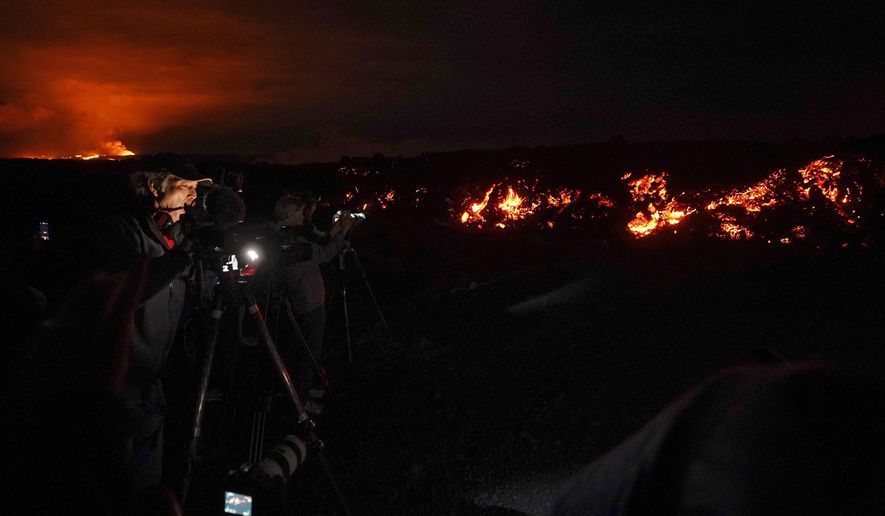Lava flows from the volcano Mauna Loa are now threatening the key Saddle Road highway on Hawai’i, the Big Island that shares the state’s name.
As of Thursday, lava flows were three miles from the highway at an elevation of 7,000 feet on Mauna Loa’s slopes, with the road still being open for traffic, according to a tweet from the Hawai’i County Civil Defense Agency.
“County officials have been working with the state Department of Transportation on a plan to shut down the Daniel K. Inouye Highway if the lava moves close enough to the road to pose a hazard,” Hawaii Emergency Management Agency Communications Director Adam Weintraub told CNN.
The Saddle Road, also known as Hawaii Route 200 and the Daniel K. Inouye Highway, bisects the island and provides the shortest driving route from the city of Hilo on the island’s eastern coast to the city of Kailua-Kona on the city’s western coast.
Officials could attempt to divert the lava, which has been done successfully for volcano eruptions in other parts of the world. No diversion plans are in place in Hawaii, and manipulating the flow on flat ground would be tricky.
“Take 10 of the biggest dump trucks you can think of — we’re getting that many dump trucks of lava every second delivered by this lava flow. If you think you can pile up stuff in front of it faster than it can deliver stuff, you’re probably wrong,” Hawaiian Volcano Observatory Scientist-in-Charge Ken Hon said at a press conference Wednesday.
The lava flow is spreading out and impeding its own progress, and the pace could therefore decrease. If the lava maintains its earlier 0.08 miles per hour pace, then the earliest it could reach the highway is Friday, experts said.
The U.S. Geological Survey noted that no property or local communities were in immediate danger from the lava flows.
“No property is currently at risk. There is a visible gas plume from the erupting fissure fountains and lava flows, with the plume primarily being blown to the North. Sulfur dioxide (SO2) emission rates are approximately 250,000 tonnes per day,” the USGS said.
Before Mauna Loa erupted Sunday, it had not erupted since 1984.
• Brad Matthews can be reached at bmatthews@washingtontimes.com.




Please read our comment policy before commenting.